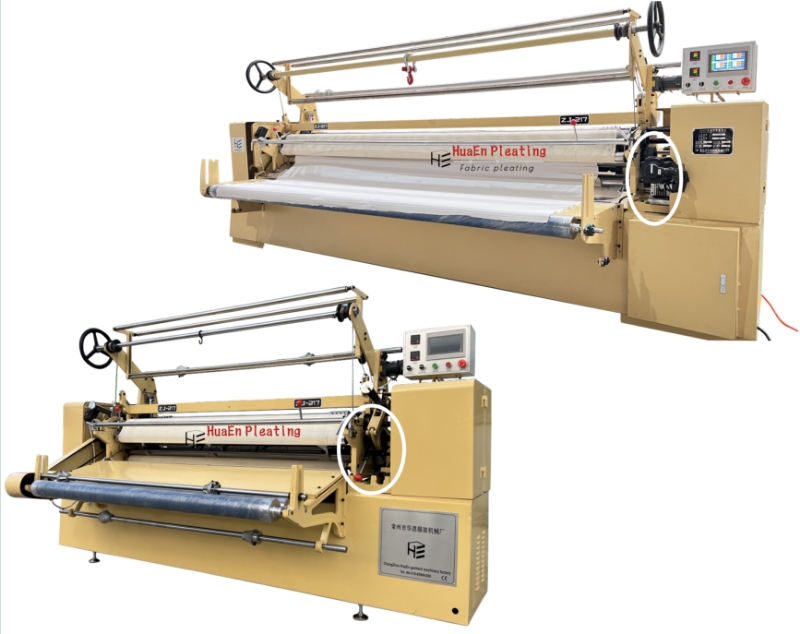ZJ-217C vs. ZJ-217D: Understanding the Difference Between Type C and D Pleaters
Release time:June, 20, 2025 Author:admin 

When it comes to fabric pleating, precision and machine performance make a significant difference in the final result. HuaEn, a trusted name in pleating technology, offers a range of pleating machines designed to suit various production needs. Among its popular models are the ZJ-217C (Type C) and ZJ-217D (Type D) pleating machines—both known for their reliability and high-quality output. While they share a common foundation, key differences in design and function set them apart. Understanding these differences is essential for textile professionals who want to make the right investment for their production line.
The ZJ-217C is a computerized pleating machine, designed for manufacturers who require greater control, automation, and consistency. It features an advanced control system that allows users to input pleat patterns digitally, adjust pleat size, spacing, and sequence, and store various pleat designs for repeat use. This level of customization makes the 217C ideal for high-volume production where uniformity, speed, and accuracy are crucial. It is especially valuable for fashion brands, curtain makers, and textile companies that frequently work on complex or large orders.
On the other hand, the ZJ-217D is a non-computerized version of the pleater, suitable for producers who prefer hands-on control and simpler operation. The D type machine is highly reliable and structurally robust, making it ideal for more traditional workshops, small-scale manufacturers, or businesses focused on custom and artisanal pleating work. It is also a more economical option, with fewer digital components, which reduces maintenance and operating costs.
In terms of application, both machines are capable of handling a wide range of fabrics, from synthetics to delicate materials like chiffon or organza. However, the ZJ-217C offers faster setup and pattern repeatability, which gives it a distinct advantage in settings where time and precision are critical. Meanwhile, the ZJ-217D allows for more tactile adjustments, appealing to professionals who prefer direct manual control over digital programming.
Ultimately, choosing between the ZJ-217C and ZJ-217D comes down to production goals, budget, and operator preference. For factories aiming for automation and large-scale production with minimal variation, the ZJ-217C is the smart choice. For businesses focused on craftsmanship, flexibility, and lower investment cost, the ZJ-217D remains a dependable and capable solution.
Whichever model you choose, HuaEn’s ZJ-217 series ensures that every pleat is formed with precision and built to meet the evolving demands of the global textile industry.

